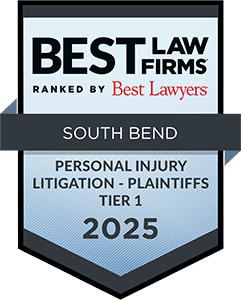 In an attempt to adapt to changing needs, including those brought about by the novel coronavirus, the Federal Motor Carrier Safety Administration (FMCSA) has modified certain federal regulations that impact truckers and, potentially, the safety of all motorists on the road.
In an attempt to adapt to changing needs, including those brought about by the novel coronavirus, the Federal Motor Carrier Safety Administration (FMCSA) has modified certain federal regulations that impact truckers and, potentially, the safety of all motorists on the road.
Pfeifer, Morgan & Stesiak discuss these changes and what new risks they may add to your daily commute.
If you were injured in a truck collision caused by a fatigued or impaired driver, our firm offers a free consultation to discuss the circumstances of your accident and what legal options may be available to you.
Federal Hours of Service Relaxed
The FMCSA implemented new Hours of Service (HOS) rules to help support the nationwide emergency conditions caused by the pandemic. These rules, effective from March 12, 2020, will continue through July 12, 2020.
Under the modified HOS rules, truck drivers that meet the qualifications for delivering essential supplies can drive longer without taking the current FMCSA-regulated breaks for rest.
The new HOS applies to drivers who operate the big rigs, 18-wheelers, tractor trailers or semi-trucks to transport certain qualifying types of cargo, such as:
- Livestock, including livestock feed
- Medical supplies needed for the ongoing diagnosis, testing and treatment of COVID-19
- Other essential supplies, such as masks, hand sanitizer, disinfectants and gloves
Initially, some routine commercial deliveries were also covered by the new rules if the cargo included an eligible quantity of qualifying emergency supplies. However, in the latest extension of Emergency Declaration No. 2020-002, this inclusion will no longer be permitted.
Other Federal Rule Modifications Effective September 2020
Amid COVID-19, the FMCSA made some additional modifications that will become the new final rule on September 29, 2020 in an effort to “provide greater flexibility for drivers without adversely affecting safety.”
These final HOS rules apply to most commercial vehicles and include four major changes:
- Short-Haul exception – Under the new rules, this exception extends from 100 air-miles to 150 air-miles and also permits a 14-hour on-duty shift (formerly 12-hours was allowed)
- Adverse driving conditions exception – Allows truckers to drive an additional two hours during adverse driving conditions.
- 30–minute break requirement – Must still take a 30-minute break, but drivers may now take that break after eight consecutive hours of driving, instead of during that on-duty time. Additionally, drivers are permitted an on-duty or not driving period to count as his or her required rest break.
- Sleeper berth provision – The sleeper berth exception is also modified under the new HOS rules to permit drivers to spend a minimum of seven, rather than eight hours of time in the berth, and a minimum off-duty rest that includes two hours either inside or outside the berth. However, the two periods must equal a minimum of 10 hours, and neither period counts against the 14-hour driving window.
Truck drivers and others in the industry believe the old rules were counter-intuitive to road safety because they encouraged truckers to operate unsafely in an effort to meet quotas and earn a living.
What Are the Current Risks of Fatigued Truck Drivers
According to the Large Truck Crash Causation Study (LTCCS), 13 percent of reported commercial motor vehicle crashes involved drivers who were deemed to be driving drowsy at the time of the accident.
It remains to be seen whether the new HOS rules will adversely affect road safety and cause more truck drivers to have accidents due to fatigue.
If you see a truck driver operating unsafely, you should report the driver by calling 9-1-1 and take steps to put as much distance between you and that truck as possible (not by speeding).
- Remain alert to what is around (or behind) your vehicle at all times
- Allow sufficient space between your car and other vehicles, especially in inclement weather, so you have time to react if another vehicle loses control
- Make sure you operate your own vehicle safely by using turn signals, checking for other traffic before turning, merging or braking, and by following traffic laws
If you see a truck swerving or drifting, that is a sure sign that the driver is either distracted, impaired or fatigued, and you do not want to get in its path. Hang back at a safe distance and wait for an opportunity to pass the truck without putting yourself or others at risk.
Contact a Licensed Attorney For Legal Help
If you are injured in a truck accident due to fatigue or other driver negligence, our licensed South Bend truck accident lawyers are prepared to help you hold the responsible parties accountable for their actions.
At Pfeifer, Morgan & Stesiak, we offer a free consultation to discuss your accident and your potential legal options. If we find you have a valid case, you can retain our services with zero costs to pay up front. You only pay after we recover a settlement or verdict on your behalf.
Call our firm anytime, day or night, to set-up your free consultation: (574) 444-0741













